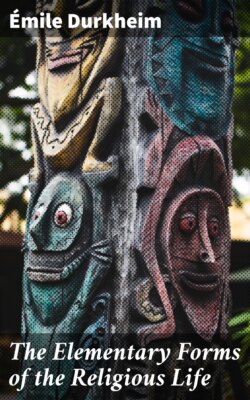Читать книгу The Elementary Forms of the Religious Life - Durkheim Émile - Страница 14
На сайте Литреса книга снята с продажи.
CHAPTER II LEADING CONCEPTIONS OF THE ELEMENTARY RELIGION I.—Animism
ОглавлениеTable of Contents
Armed with this definition, we are now able to set out in search of this elementary religion which we propose to study.
Even the crudest religions with which history and ethnology make us acquainted are already of a complexity which corresponds badly with the idea sometimes held of primitive mentality. One finds there not only a confused system of beliefs and rites, but also such a plurality of different principles, and such a richness of essential notions, that it seems impossible to see in them anything but the late product of a rather long evolution. Hence it has been concluded that to discover the truly original form of the religious life, it is necessary to descend by analysis beyond these observable religions, to resolve them into their common and fundamental elements, and then to seek among these latter some one from which the others were derived.
To the problem thus stated, two contrary solutions have been given.
There is no religious system, ancient or recent, where one does not meet, under different forms, two religions, as it were, side by side, which, though being united closely and mutually penetrating each other, do not cease, nevertheless, to be distinct. The one addresses itself to the phenomena of nature, either the great cosmic forces, such as winds, rivers, stars or the sky, etc., or else the objects of various sorts which cover the surface of the earth, such as plants, animals, rocks, etc.; for this reason it has been given the name of naturism. The other has spiritual beings as its object, spirits, souls, geniuses, demons, divinities properly so-called, animated and conscious agents like man, but distinguished from him, nevertheless, by the nature of their powers and especially by the peculiar characteristic that they do not affect the senses in the same way: ordinarily they are not visible to human eyes. This religion of spirits is called animism. Now, to explain the universal co-existence of these two sorts of cults, two contradictory theories have been proposed. For some, animism is the primitive religion, of which naturism is only a secondary and derived form. For the others, on the contrary, it is the nature cult which was the point of departure for religious evolution; the cult of spirits is only a peculiar case of that.
These two theories are, up to the present, the only ones by which the attempt has been made to explain rationally[93] the origins of religious thought. Thus the capital problem raised by the history of religions is generally reduced to asking which of these two solutions should be chosen, or whether it is not better to combine them, and in that case, what place must be given to each of the two elements.[94] Even those scholars who do not admit either of these hypotheses in their systematic form, do not refuse to retain certain propositions upon which they rest.[95] Thus we have a certain number of theories already made, which must be submitted to criticism before we take up the study of the facts for ourselves. It will be better understood how indispensable it is to attempt a new one, when we have seen the insufficiency of these traditional conceptions.
